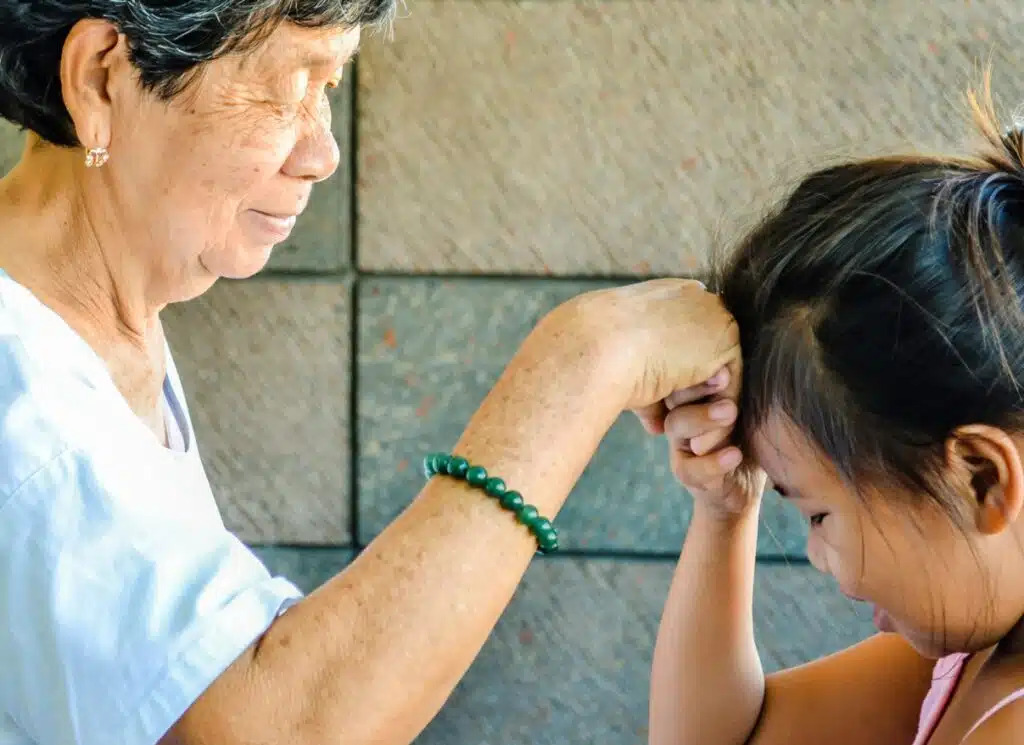【講師コラム】マリア講師No13~Pagmamano: An Enduring Custom of Respect~
Englishbuds 管理人 MommyKayo です。
着々と秋が深まってきています🍂
今週も1週間があっという間に終わりました・・・。
この調子じゃすぐに大晦日だなぁ・・・と思う今日この頃。
私にとって1週間の節目となっている
金曜日の講師コラム、
今日からテーマが変わります!
前回の食文化に続き、
今回はフィリピンの慣習をテーマに
各講師にフィリピンの風習を紹介してもらいます♪
トップバッターはマリアです!
どんな風習を紹介してくれるのでしょうか(^^)
Pagmamano: An Enduring Custom of Respect
Growing up in a Filipino household, one custom that I find unique and endearing is “Pagmamano.” It’s a Filipino custom, a way of showing respect to our elders. This custom is like a warm hug that ties generations together, and I’m excited to share about it with you.


The act of Pagmamano is a simple yet heartwarming gesture. When you greet an elder, you take their hand and gently raise it to your forehead while saying “Mano po” or “Bless po.” It is usually done towards those who are older by two generations or more. As a child, I remember my parents and grandparents teaching me this age-old gesture. “Pick up my hand, bow your head and gently raise my hand to your forehead.” That’s how it is taught. This Filipino custom reminds us of the respect and gratitude we hold for our elders. It’s a way of acknowledging their wisdom, experience, and importance in our lives.
But what’s truly lovely about Pagmamano is that it is not just a greeting; it’s a daily practice – a part of our daily lives. When I return home, I would “mano” to my parents. When I visit my relatives, I’d approach them with a smile and say “Bless po” or “Mano po” to everyone older than me, except for my cousins. Even my elder relatives would “mano” to my relatives who are older than them. For me, it’s not just a way of greeting. It’s a reminder that love and respect for family should always be a part of our lives.
What makes this “mano” gesture even more endearing is that it also goes beyond our immediate family. If I ran into a friend of my parents on the street, I’d automatically offer a “mano” gesture as a sign of respect. If my friends go to our house, they would “mano” to my parents. This practice is done towards teachers, too. It’s a way of extending the warmth we have for our family to our parents’ friends, friend’s parents, and even teachers, making them feel like part of our family too.
Pagmamano is something we teach to very young kids, even as young as one year old. It’s amazing to see these little ones, with their tiny hands, attempting to perform this gesture with all the innocence. It’s not about perfection, but about teaching them the values of respect, humility, and the importance of family bonds.
As I’ve grown older, I’ve come to realize that Pagmamano is an essential part of our Filipino identity. It speaks to the heart of Filipino culture, emphasizing the importance of family ties and respect for our elders. As we continue to practice Pagmamano in today’s fast-changing world, it’s a timeless connection to our heritage. It’s a bridge that connects us to our past, reminding us of the values that have shaped our identity as Filipinos. And as I share this tradition with the next generation, I’m filled with hope, knowing that these values of respect, humility, and family unity will continue to thrive in our children.
フィリピンは家族を非常に大切にする文化ですが
そこから自然と目上の人を敬う意識が強くなるのでしょうね。
マリアが紹介してくれたPagmamanoという風習は初耳です!
以前、フィリピンを訪れた際、一番耳にしたタガログ語は
「アテ」と「クヤ」でした。
アテは目上の女性を呼ぶとき、
クヤは目上の男性に呼びかける時に使われていました。
言葉でも目上の人を敬う表現が自然と使われているのだな
と思っていましたが、
このようなジェスチャーもあるのですね。
私、フィリピンの講師に会いに行ったら
みんなのおでこに手を当まくることになりますね(爆)
途中から「私はダライラマ?」と錯覚しそうwww
ふう、最年長は辛いわ・・・。
しかし、やっぱりまだまだフィリピンについて
知らないことがたくさんなのだなぁ~と実感させられました!
来週の担当はローマー講師です!お楽しみに(^^)
にほんブログ村


